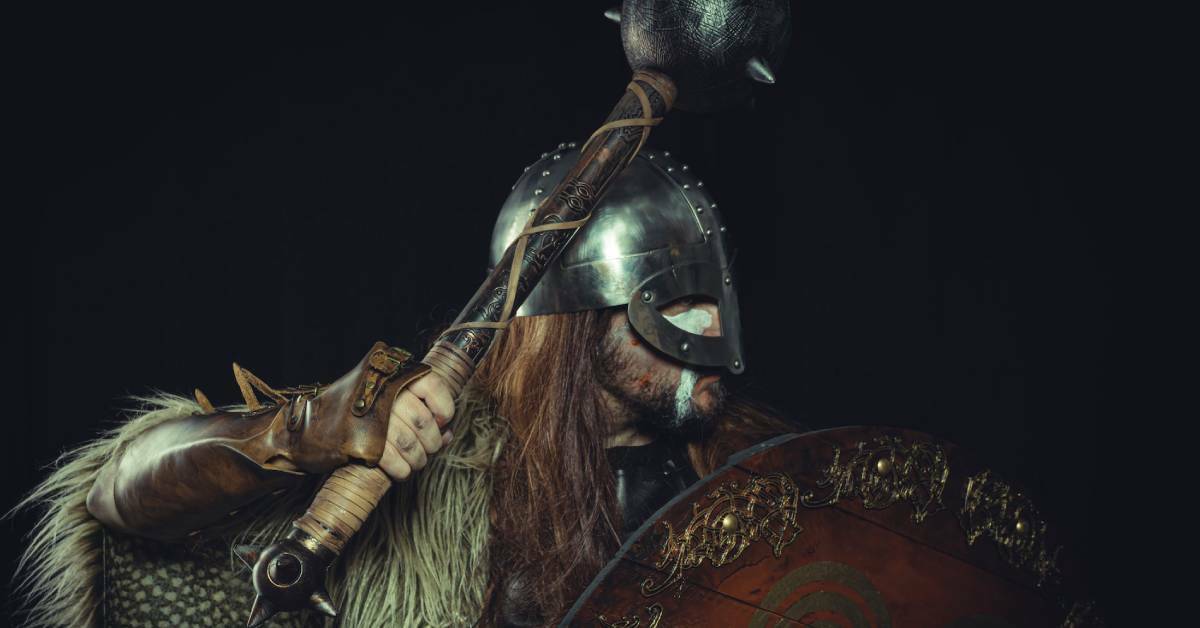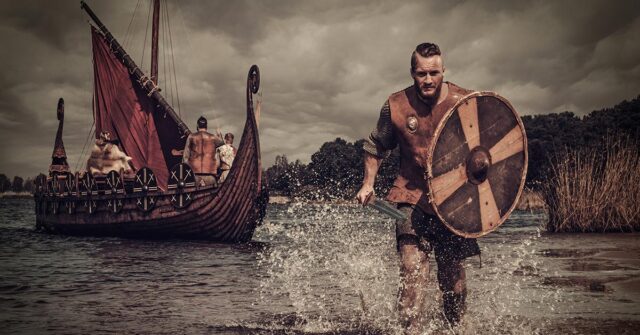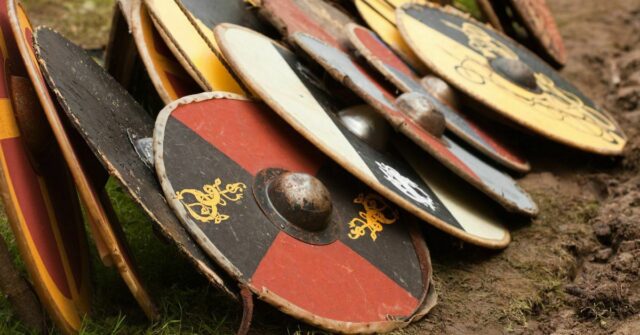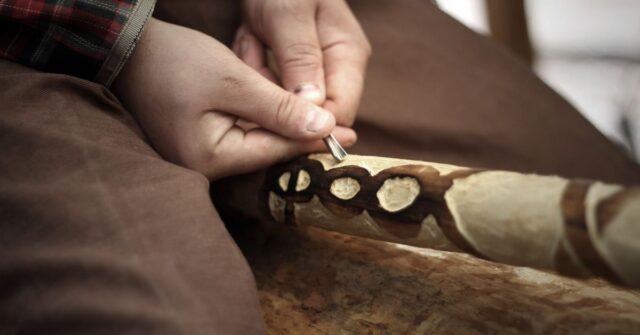Ever wondered how to create a Viking ensemble of your own? This comprehensive guide will help you understand, design, and wear clothing that accurately represents the Viking era.
From understanding the materials used to specific clothing items for men and women, this guide covers all you need to know about Viking attire.
Introduction to Viking Apparel
Before diving into the intricacies of Viking apparel, it is essential to familiarize oneself with the era and the significance of clothing in their culture. Clothing was not just a necessity but an expression of status, identity, and functionality for the Vikings.
Understanding the Viking Era
The Viking era, also known as the Viking Age, spans the late 8th century to the early 11th century. Originating in Scandinavia, the Vikings were seafarers known for their exploration, trade, and sometimes invasions.
The climate and lifestyle greatly influenced their clothing, which was functional yet embodied their rich culture.
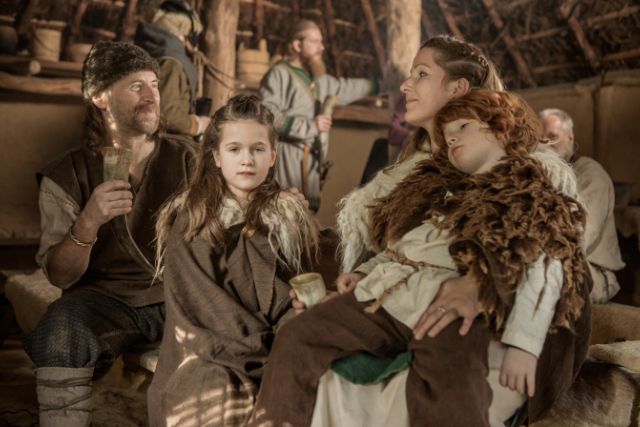

The Importance of Clothing in Viking Culture
Viking clothing was much more than a protective layer against the elements. It was a reflection of the individual’s social status, occupation, and sometimes even their marital status.
Richly dyed clothes, intricate patterns, and the quality of the fabric often indicated a higher social standing.
Materials Used in Viking Clothing
Vikings were resourceful people who utilized the materials available to them to the fullest. Their clothing was primarily made of wool, linen, and fur. They also used natural dyes to bring colour into their attire.
Viking Clothing Fabrics
The selection of fabrics for Viking clothes was largely based on their availability and functionality. Here’s a glimpse into the common fabrics used.
Wool
Wool was the most common fabric in Viking attire. It was warm, durable, and water-resistant, making it perfect for the harsh Scandinavian climate. Vikings sheared their sheep and spun the wool into threads, which were then woven into fabric.
Linen
Linen, made from the fibers of the flax plant, was also a popular choice for Viking clothing. Although more labour-intensive to produce than wool, linen provided a lightweight and breathable alternative, particularly suited for the warmer summer months.
Silk
While silk was not commonly produced in the Viking regions, it was a prized material often obtained through trade. Silk items were usually worn by the wealthy, demonstrating their status and connections to far-off lands.
Fur
Fur played a significant role in Viking attire, especially during the cold, harsh winters. Furs of various animals, like bears, foxes, and marten were used to line cloaks, gloves, and boots.
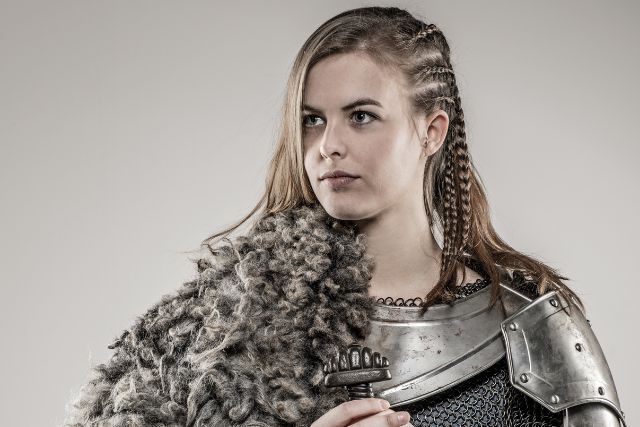

Dyes and Colors
Vikings used natural dyes to add colours to their clothing. From plants, bark, and even insects, various sources were used to create a range of vibrant colours. The type and depth of colour also had social implications, with brighter, richly dyed clothing typically indicating higher status.
Viking Clothing for Men
The typical Viking man’s wardrobe consisted of practical yet comfortable clothing suitable for their active lifestyle. Let’s dive into the specific pieces that made up their attire.
The Viking Tunic
The Viking tunic was a key piece in every man’s wardrobe. Made from wool or linen, it was a pull-over garment, often reaching midway down the thigh, with side slits for ease of movement. It was typically worn over trousers and could be belted at the waist.
Trousers and Leg Wraps
Viking men wore trousers made of wool for warmth and protection. They were held up by drawstrings or a belt. Additionally, leg wraps, or “winding cloths”, were used, wrapped from the knee to the ankle for extra warmth and protection.
Viking Cloaks and Capes
Viking cloaks or capes were essential for protection against the harsh Scandinavian weather. They were usually made from heavy wool and fastened at the shoulder with a brooch or a pin. Some cloaks were lined with fur for added warmth.
Footwear
Viking footwear consisted of simple leather shoes or boots. They were often made using the turn-shoe method, where the upper part was stitched to the sole inside out, and then turned for use. In colder climates, these were stuffed with grass or fur for insulation.
Viking Clothing for Women
Similar to men’s clothing, Viking women’s apparel was functional yet carried symbolic meanings. Here’s an overview of the typical garments that made up a Viking woman’s wardrobe.


The Viking Dress
Also known as a “kyrtill”, the Viking dress was a long, loose garment made from wool or linen, usually reaching down to the ankles. It had long sleeves and was often worn over a linen underdress. It was practical and provided freedom of movement.
The Apron Dress
The apron dress, or “hangerok”, was a distinctive piece of the Viking woman’s attire. Worn over the kyrtill, it was a sleeveless dress held up by two brooches at the shoulders. The apron dress was often adorned with decorative woven bands and embroidery.
Undergarments
Women’s undergarments were usually made from linen, providing comfort and modesty. These garments were rarely seen, as they were worn underneath the main clothing layers.
Footwear
Just like the men, Viking women wore simple leather shoes or boots. They were functional and provided protection from the cold and rough terrain.
Accessories in Viking Attire
Accessories played an important role in Viking attire, adding both functionality and aesthetic appeal. From belts and buckles to various forms of jewellery, these elements completed the Viking look.
Belts and Buckles
Belts were a standard accessory in both men’s and women’s Viking attire. They were made from leather and featured metal buckles. In addition to holding up trousers or cinching a tunic at the waist, belts also served as a hanging place for tools and weapons.
Jewellery
Viking jewellery was not only ornamental but often carried symbolic meanings and indicated status and wealth. It was made from a variety of materials including gold, silver, bronze, and glass beads.
Arm Rings and Bracelets
Arm rings and bracelets were common amongst both Viking men and women. They were often twisted or coiled metal, sometimes ending in animal head motifs. These accessories also served as a form of currency in trade.
Necklaces
Necklaces were another popular form of jewellery. They were usually made from metal or glass beads strung on a cord. Pendants were also common, featuring symbols of religious or magical significance.
Earrings
Earrings were less common but did exist in the Viking era. They were usually simple hoops made from gold or silver.
Brooches
Brooches were an essential accessory in Viking clothing, serving the practical purpose of fastening garments such as cloaks and women’s apron dresses. They were often ornate, displaying intricate designs and craftsmanship.
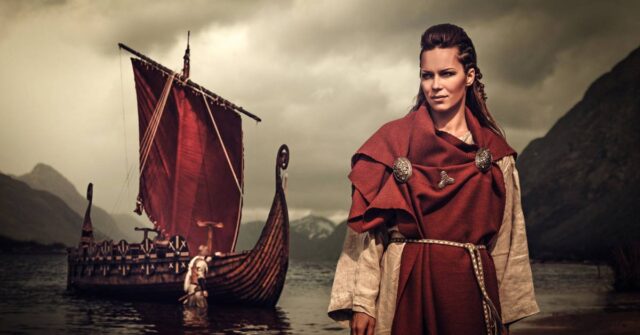

Headwear
Headwear was an integral part of Viking attire, especially for women. Women often wore headscarves or caps, while men typically wore simple woollen caps. Helmets were worn during warfare and were not a part of daily wear.
Viking Armor and Weapons
Armour and weapons are often associated with the Vikings due to their reputation as fearsome warriors. Here, we delve into these elements that are occasionally part of Viking attire, especially during reenactments.
Shields
Shields were the primary form of defense for a Viking warrior. Typically round and large enough to cover the user’s torso, they were made from wood with a metal center and often painted with various designs.
Swords and Axes
Viking warriors were renowned for their swordsmanship and axe handling. These weapons were made from iron with wooden handles. Swords were often highly decorated, particularly the hilt, indicative of the owner’s status.
Armour
Contrary to popular belief, Vikings did not often wear heavy armour. Chainmail was the most protective armour, but it was expensive and not commonly used.
Most Vikings wore simple leather or padded armour, which offered a degree of protection without hindering movement.
Helmets
Viking helmets were typically made from several pieces of iron riveted together, forming a cap that protected the head. Contrary to popular myth, Viking helmets did not have horns. They were functional and designed to offer the most protection with the least amount of material.
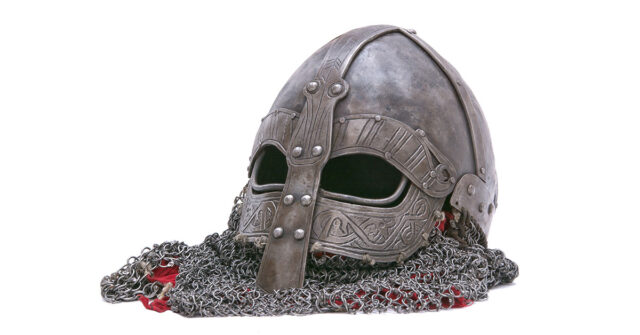

Making Your Own Viking Clothes
Creating your own Viking clothes can be a rewarding experience, giving you a personal touch of the Viking era. Here, we guide you through sourcing materials, sewing techniques, and how to dye your clothes.
Sourcing Materials
For an authentic Viking outfit, aim for natural fabrics like wool or linen. Leather is also needed for belts and shoes. Look for natural dyes for colouring your fabric.
Local fabric stores or online merchants often carry these materials. Recycle and repurpose when possible, as it aligns with the Viking ethos of resourcefulness.
Cutting and Sewing Techniques
Cutting and sewing Viking clothing requires basic knowledge of sewing. Start by taking your measurements and sketching your designs.
Patterns for Viking clothes like tunics, dresses, and trousers are simple, often composed of straight lines and rectangles. Use straight stitches for seams and consider using a more decorative stitch along hems for an authentic touch.
Dyeing Your Clothes
Dyeing your Viking clothes can be an exciting process. Using natural dyes like Woad for blue, madder root for red, and Weld for yellow, you can achieve a range of colours.
Remember, the process requires patience as natural dyes often take time to impart their colour and require a mordant to ensure the colour lasts.
Maintaining Your Viking Clothing
Maintenance is key to ensuring the longevity of your Viking attire. From washing and drying to repairs and replacements, here’s how you can take care of your Viking clothes.
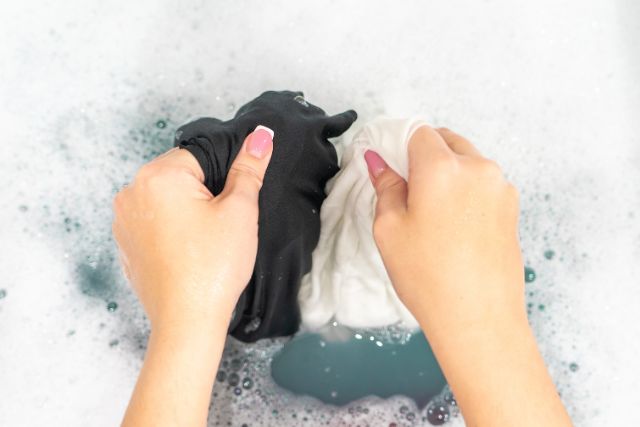

Washing and Drying
Viking clothes made from wool and linen should ideally be hand-washed with a mild detergent and left to air-dry. Avoiding harsh chemicals and high heat will help preserve the fabric and the colour of your clothes.
Repairs and Replacements
Repairing any damage promptly will prolong the life of your clothes. Simple stitches can fix most tears, and replacements should be sourced from similar materials to keep the outfit authentic.
Conclusion: Embracing Your Inner Viking
Embracing Viking attire is about more than dressing up; it’s about connecting with a rich and storied past. It’s about appreciating the simplicity and functionality of their clothing, the natural materials they used, and the symbolism woven into their outfits.
Whether you’re preparing for a reenactment, a themed party, or just fascinated by Viking culture, dressing like a Viking can be a deeply rewarding experience. Happy crafting!

